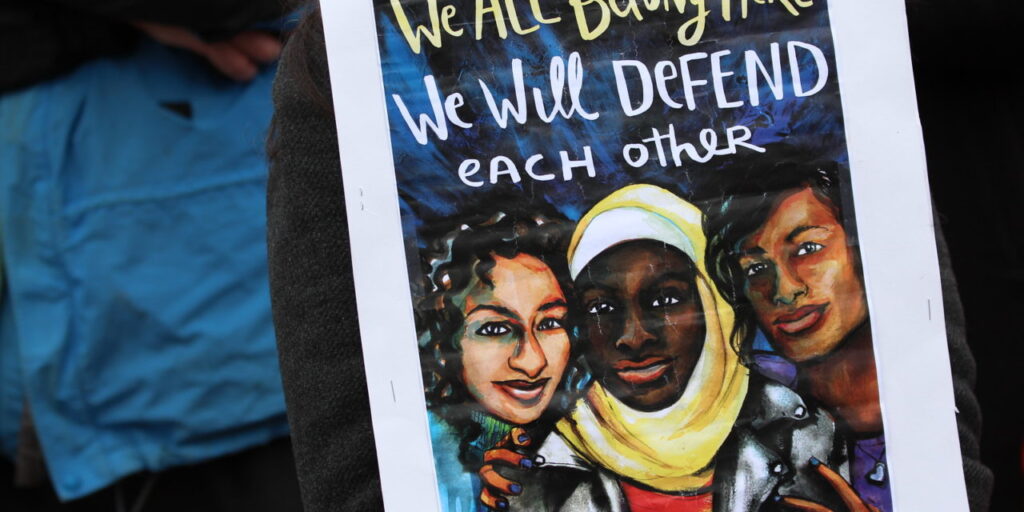Bridging the Gap: Language Barriers for Arab Refugees Living in America

By: Yaara Aleissa / Arab American Contributing Writer
Welcome to the United States. The land of the free, home of the brave. Where life, liberty, and the pursuit of happiness reside in unison. This is the United States that thousands fight to be in and you’ve finally made it.
This is the dream that brings immigrants to the United States including Arab immigrants across the 22 Middle Eastern nations. This country is a place of refuge although there is an adjustment period before it becomes home.
History of Arab Immigration to the U.S.
The first wave of immigration of Arabs to the United States was around 1880. With an inflow of Arabs from the Ottoman Empire in present-day Syria, Lebanon, Jordan, and Palestine. The pressures to leave came from the dissolution of the once-structured government of the Ottoman Empire. However, financial instability and religious persecution led Christian Arabs to flee. Even today these remain to be some of the common reasons for immigrants and refugees leaving their nation of origin.
The immigration of Arabs into the United States has come in waves due to government blocks to slow down or cease immigration. One early ban in 1924 is the Johnson-Reed Immigration Act which targeted the restriction of Eastern and Southern Europeans and Asians. Alongside the more recent Muslim Travel Ban imposed during the Trump administration that restricted seven Middle Eastern countries with predominantly Muslim populations.
Arriving in the U.S.
You’ve made it to the United States. The language spoken has sounds that are still unfamiliar. Some phrases are not completely foreign and you can catch onto them. Yet, formulating a response still feels empty. Because even if you understand what is going on around you no one understands your mother tongue. Things move forward regardless and now begins a new chapter, a new place, possibly a new place to call home.
The experiences of Arabs as they form their life in the United States are not universal or identical. Within the Arab world, there are diverse dialects, traditions, practices, and cultural values. These do not dissolve with their arrival. Nor is it required of any immigrant to separate the two cultural backgrounds that will now intermix. Being Arab and becoming American.
It is showcased that Arab refugees, after settling in the United States, struggle with challenges of discrimination, poverty, and various forms of vulnerability. One of the most prominent issues is having a fair representation of Arab ethnicity that isn’t simplified to a demographic box of “White” according to the U.S. Census.
Battling the Overload
A new language to learn in a country that stretches over 95,000 miles. Except it brings back a little bit of home. The Middle East is united by the Arabic language yet each nation has its own sense of self similar to each of the states here. Alongside the knowledge that Arabs exist in each of these fifty states maybe the adjustment to a foreign country can be smoothened.
Finding a community is essential and can reshape the experience for an immigrant together. Community builds a sense of self but also shines awareness on the difficulties that Arab immigrants are faced. Further helping them realize they are not alone in this journey of acclimation.
Alongside this, many Arab immigrants are not coming alone but with families. Their priority becomes settlement and then a quick transition into the workforce. Ensuring their family is guaranteed the tenants that this country is meant to offer. In the process of prioritizing financial stability, it will come at a cost of burnout and not acknowledging difficulties of mental state.
Finding stable work poses especially difficult for Arab immigrants who do not hold a degree, or the transfer of their degree was not accepted in the United States. Due to this, many immigrants are more likely to fall into the trap of minimum pay wages in a sense of survival. Taking these jobs may seem harmless to them especially when comparing it to the state the refugees were once living in.
Overcoming the Barriers
All hope is not lost. One of the most common barriers immigrants and refugees face is not just the adjustment to a new country but a new language. A new form of communicating verbally and by social cues. There are however free resources such as the BBC Learning English course that is designed for first-time learners. It is designed with different time lengths for those that are looking to start from the beginning or for quick phrases to simply get by.
Another important resource is being familiar with local refugee and immigrant ministries or facilities. One easy way to locate these facilities is through Immigration Advocates. This organization simplifies the difficulty of locating a nearby facility for Arab immigrants and refugees. Finding these facilities are important because of the tremendous support they provide. With basics such as translating state documents to building a group of contacts and fellow members that become encompassed into a community. Building the foundations of a wonderful home in the United States.
Check out the Arab America Blog here!









